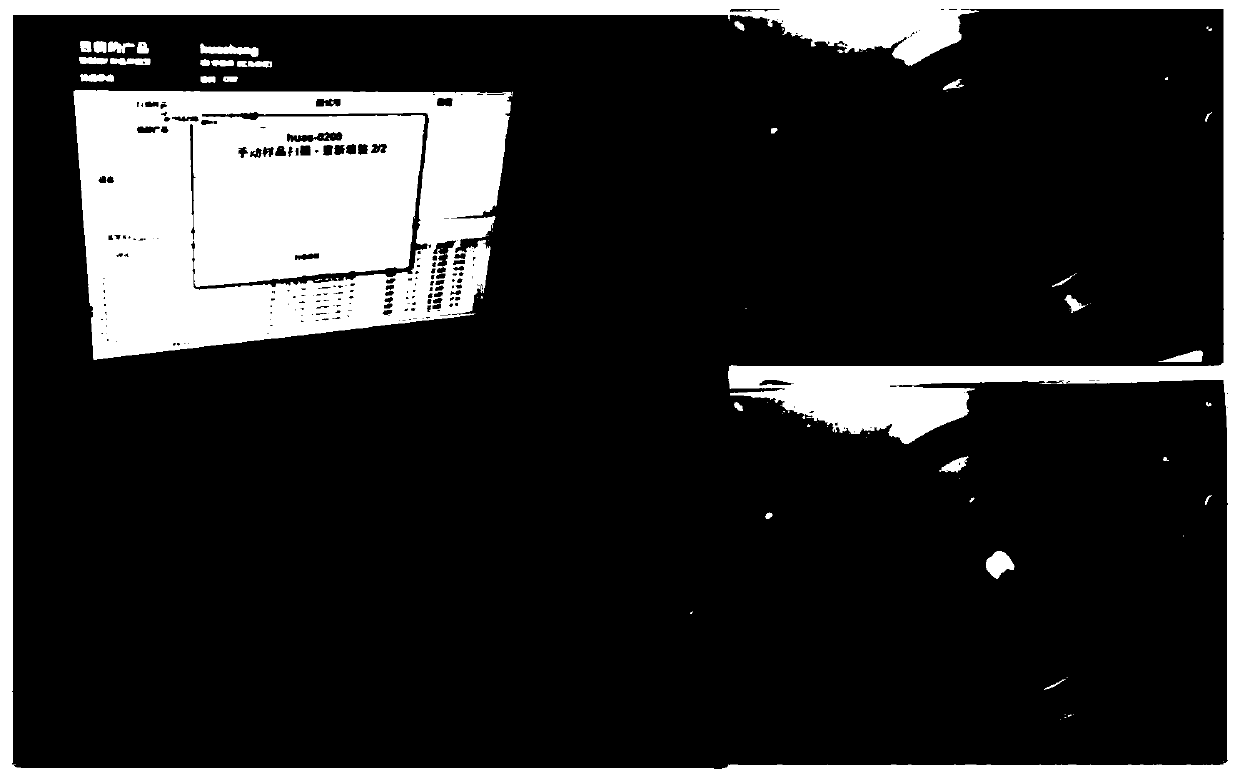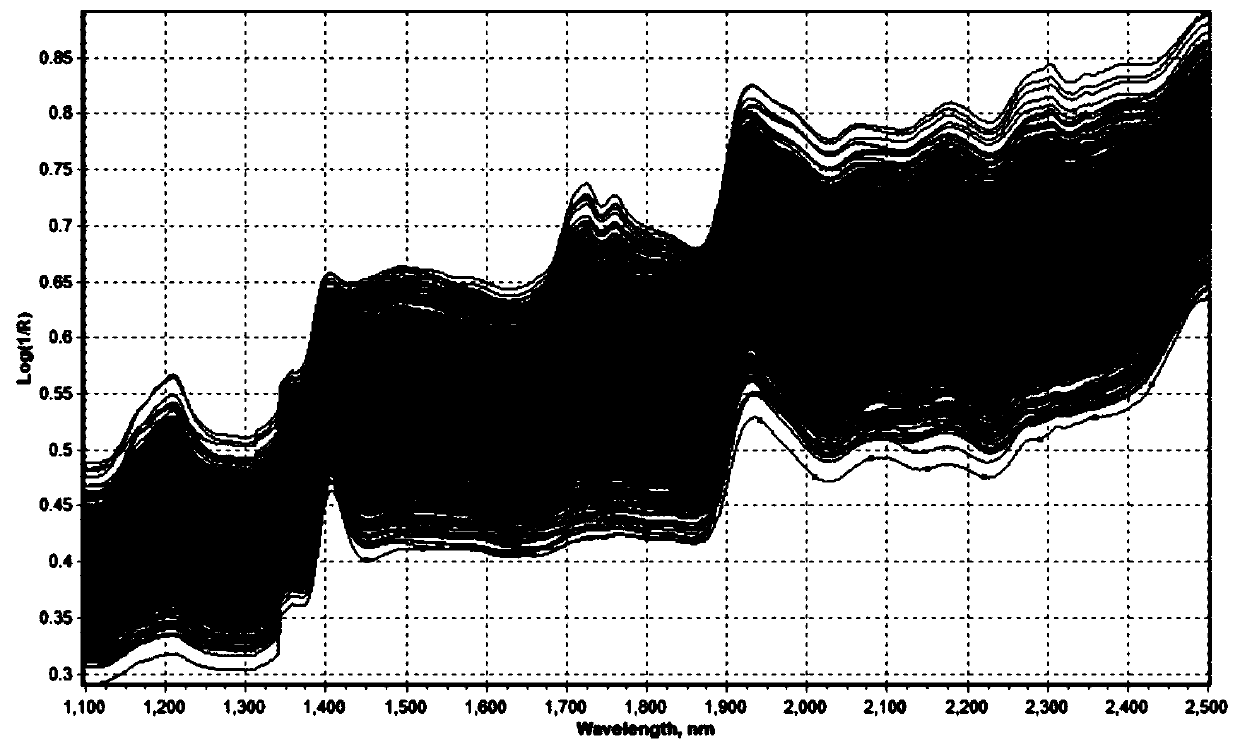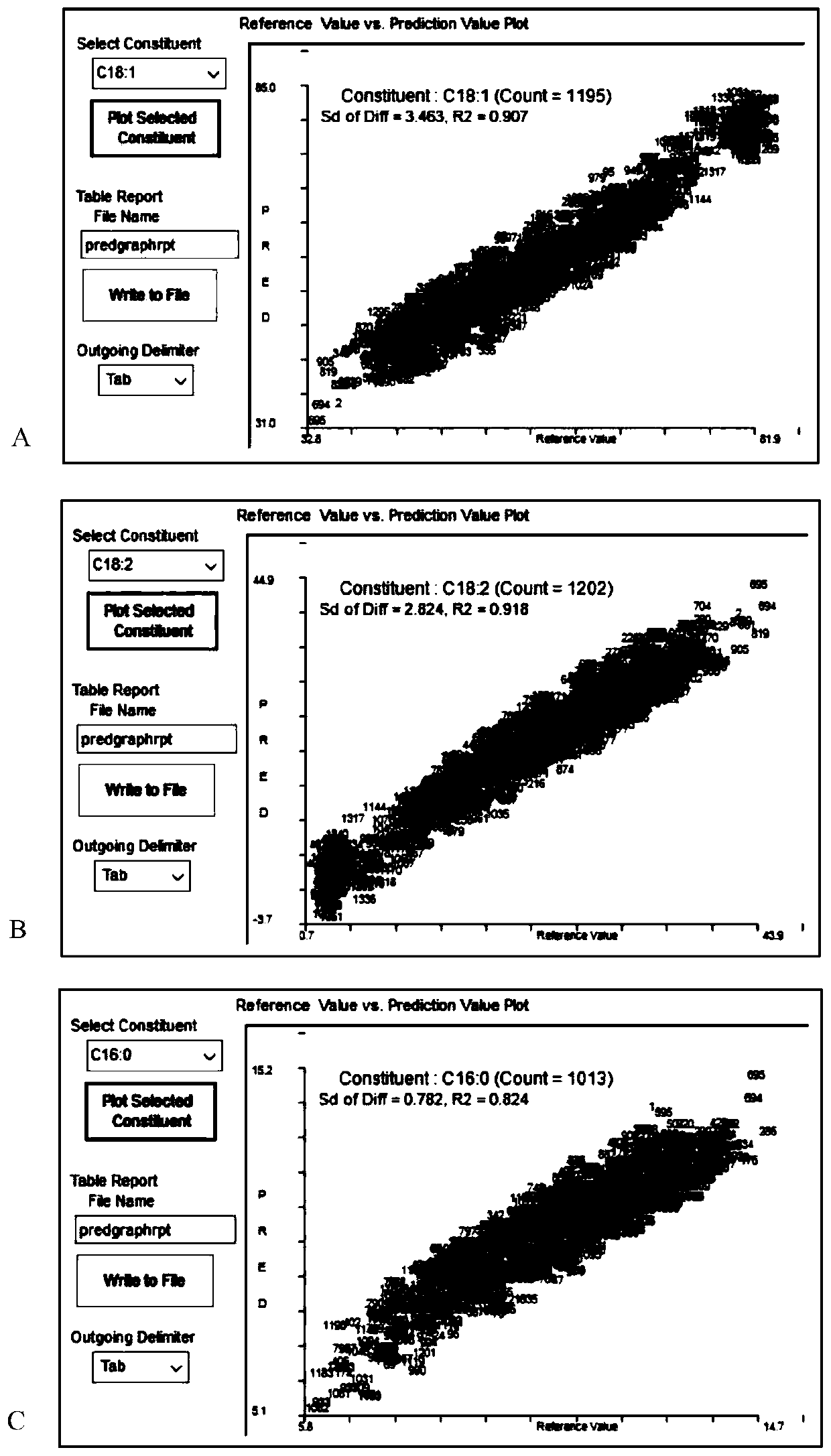Method for detecting content of oleic acid, linoleic acid and palmitic acid in single-grain peanuts based on near infrared spectrum
A near-infrared spectroscopy, linoleic acid technology, applied in measuring devices, material analysis by optical means, instruments, etc., can solve the problems that the prediction accuracy cannot meet the actual needs, difficult samples are accurately predicted, and difficult to obtain, etc., to achieve accuracy High, speed up the breeding process, predict the effect of high results
- Summary
- Abstract
- Description
- Claims
- Application Information
AI Technical Summary
Problems solved by technology
Method used
Image
Examples
Embodiment 1
[0036] In the first step, representative single peanut seeds were selected as a standard sample set for establishing mathematical models for predicting oleic acid, linoleic acid, and palmitic acid; specifically, more than 1,000 peanut seeds were used, which originated from 520 accessions Peanut germplasm resources with very rich genetic background, including China's micro-core collection, ICRISAT's micro-core collection and 224 Chinese peanut varieties, the selected materials are very representative;
[0037] The second step uses a near-infrared spectrometer to measure the near-infrared spectrum of the above-mentioned peanut samples, and collect near-infrared spectrum information; wherein, the range of the near-infrared spectrum scanning spectrum range is 4000-12500cm-1, and one seed is taken for each sample during the measurement. , repeat the scan 3 times, and reload the peanuts into the sample cup at a different angle during the second and third scans to obtain multiple near...
PUM
 Login to View More
Login to View More Abstract
Description
Claims
Application Information
 Login to View More
Login to View More - R&D
- Intellectual Property
- Life Sciences
- Materials
- Tech Scout
- Unparalleled Data Quality
- Higher Quality Content
- 60% Fewer Hallucinations
Browse by: Latest US Patents, China's latest patents, Technical Efficacy Thesaurus, Application Domain, Technology Topic, Popular Technical Reports.
© 2025 PatSnap. All rights reserved.Legal|Privacy policy|Modern Slavery Act Transparency Statement|Sitemap|About US| Contact US: help@patsnap.com



